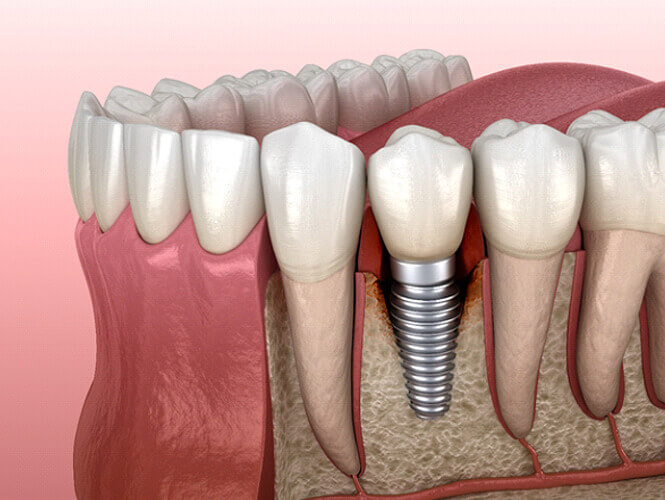Saving Your Restored Smile
Dental implants are successful in the vast majority of cases. However, like any medical treatment, they are not totally infallible. In rare instances, a failed dental implant can happen. Dr. Rasmussen is an experienced implant dentist and expert periodontist. He is ready to analyze potential problems with your implants and help your restored smile to thrive once again. Continue reading this page to learn more about why dental implants sometimes fail, how you can recognize the signs of a failed implant, and possible treatment options.

Why Do Dental Implants Fail?
The most common cause of dental implant failure is an infection known as peri-implantitis. It occurs when bacteria attack and destroy the tissue around an implant, compromising its base of support. Often, missteps in oral hygiene are the culprit behind peri-implantitis, but genetics and other factors can also contribute to it.
Other possible causes of implant failure include:
Failed osseointegration. A patient’s health problems may prevent their jawbone from bonding properly with their implants.
Teeth grinding and clenching, or an accident, might damage an implant or the surrounding tissue.
Human error. Some dentists do not have adequate training to handle implant placement surgery, and they make mistakes during the procedure. (This shouldn’t be a problem for you as long as you do thorough research before you choose a doctor to perform your surgery.)
Symptoms of Failed Dental Implants
Early dental implant failure occurs shortly after the implant placement surgery, whereas late dental implant failure can occur at practically anytime. It might happen years or even decades after the initial placement surgery.
Symptoms of both types of implant failure are similar and can include:
Abnormal pain. Some soreness is to be expected after implant placement surgery, but severe pain might signal a problem. After you adapt to using your implants, you shouldn’t even notice their presence, and any type of pain could indicate trouble.
Swelling, redness, and pus. These are signs of an infection and should move you to call our practice right away.
An implant feels loose. In some cases, a loose-feeling implant is due to a problem with the restoration. In other instances, the implant itself is in danger of failing.
How Dental Implant Salvage Works
As soon as you suspect there is a problem with your dental implants, visit our office. Dr. Rasmussen will thoroughly examine your mouth and your dental implants. After he pinpoints the cause and extent of the problem, he will be able to formulate a treatment plan. In some cases, it is possible to conquer an infection with a thorough cleaning of the mouth and antibiotic therapy.
However, there is also the possibility that it will be necessary to remove a failed implant altogether. You might need a bone graft to rebuild lost tissue. Then, after you have healed adequately, Dr. Rasmussen might be able to insert a new dental implant so you can once again enjoy a complete and healthy smile.
